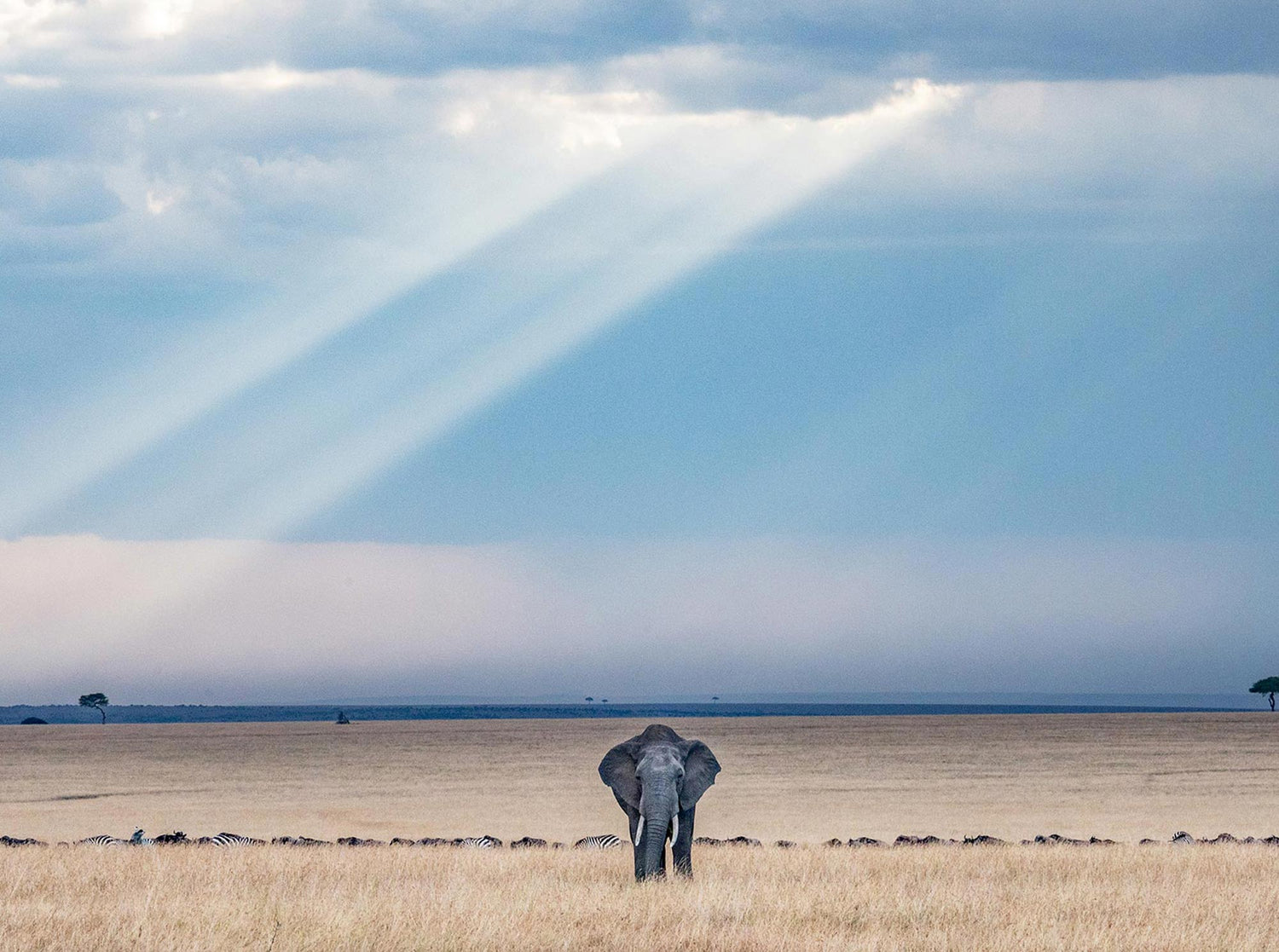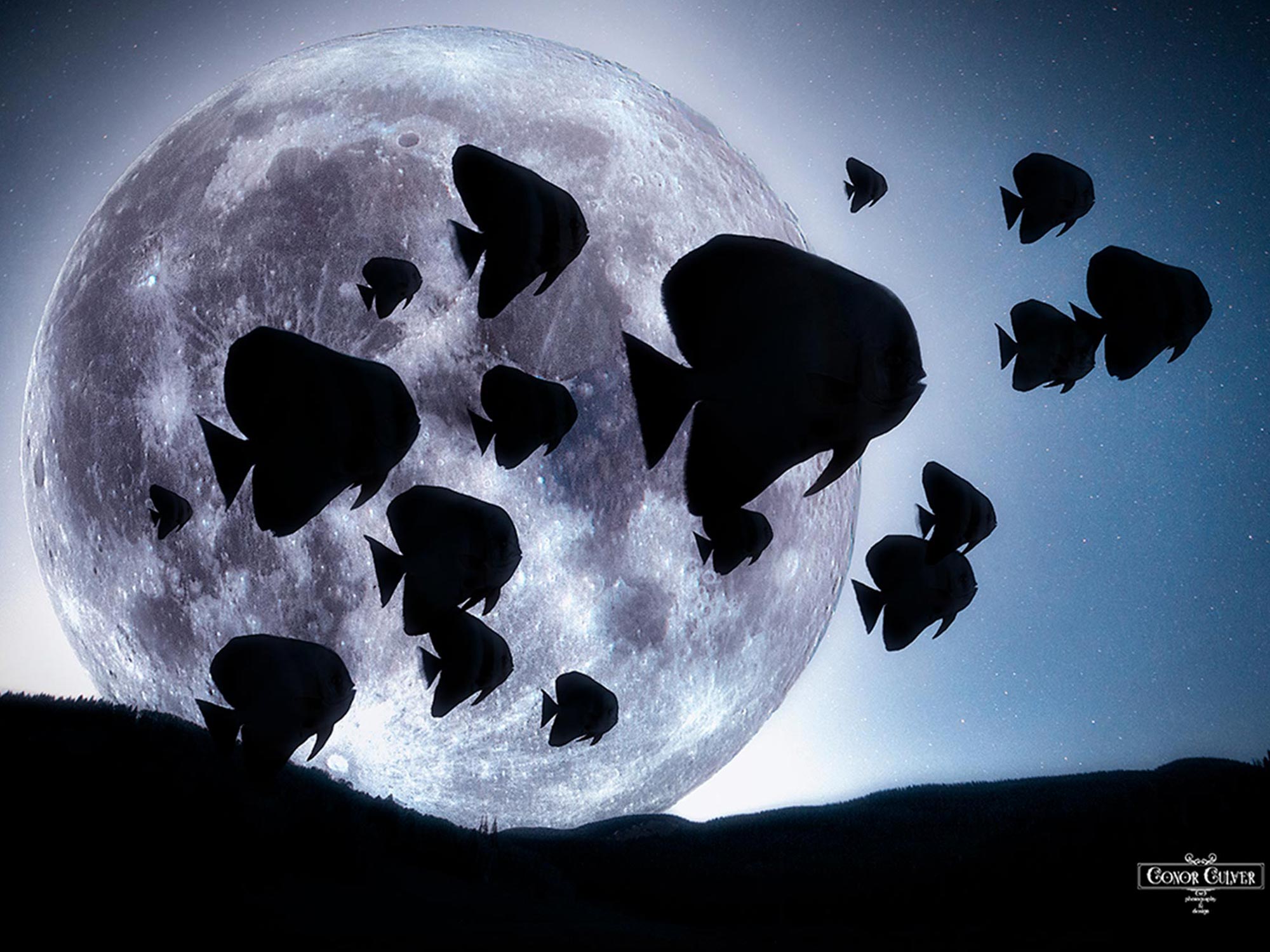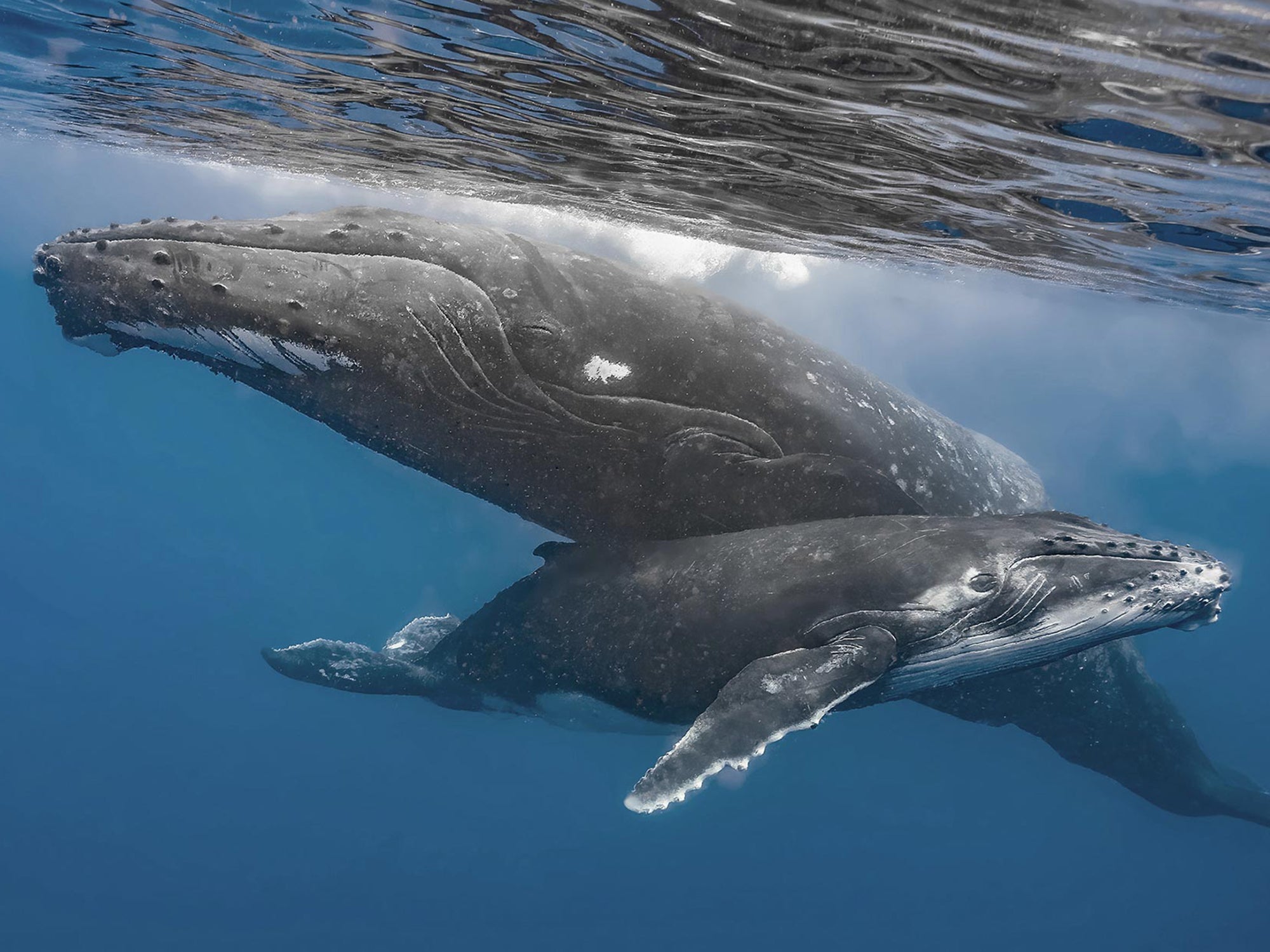By Glenn Ostle
What does an article about an African safari have to do with underwater photography? More than you might think.
Most people embark on a safari with a general understanding of what types of animals or situations they might encounter. But it is impossible to know what they will actually see until they get there. Photographically, that means being prepared in every way, to create the best photos possible when opportunities present themselves.
The same holds true underwater but with a great deal more complexity. Practicing your craft on topside attractions, like a safari, can improve your underwater photography in a number of ways.

Good composition is about capturing a moment or telling a story. Sometimes it just happens, as when this young lion walked up to pay respect to its father, the leader of the pride of lions. You just need to stay aware and be ready when that magic moment occurs. And that’s just as true underwater as it is on land. © 2021 Glenn Ostle
Knowing Your Equipment
Experts will tell you that you need to be totally familiar with your camera in order to get the best results. And underwater photographers will tell you that the worst time to try to become familiar with your camera is…well, underwater.
Diving already requires that you pay attention to lots of critical equipment while at the same time staying aware of your surroundings. So, adding the additional pressure of trying to learn a new camera, or of not being familiar with your current camera, just adds to the task loading. Practicing with your camera on land can help alleviate a lot of underwater anxiety.

The multi-colored Lilac-breasted Roller is the national bird of Kenya. I watched this one as he sat on a branch and tossed a Dung Beetle into the air before eating it. With my camera set on a high frame rate, I took a series of shots which happened to contain this one which best tells the story. © 2021 Glenn Ostle

This photo of a large vulture making short work of a wildebeest carcass, was interesting in color. But converting it to a high-key black and shot added some drama to the scene. Again, many underwater shots can benefit from this technique. © 2021 Glenn Ostle
Getting a Feel for the Controls
During our recent safari, I took more than 5,000 photos over a three-week period. During that time, I became more familiar with my camera than I had ever been. Being able to locate buttons and dials in order to change settings, while my eye was still pressed against the viewfinder, soon became second nature. This familiarity will certainly improve my underwater photography.

This double exposure of an elephant set against a grassy plain worked out well as all the background elements appear to be inside the elephant’s body. Using in-camera double exposure, this was fairly easy to visualize at the time. © 2021 Glenn Ostle

A tight shot of this lion resulted in a more interesting photo as it draws the viewer’s attention to the lion’s eye, which in this case is located in such a way that satisfies the rule of thirds. © 2021 Glenn Ostle
Practicing in Different Conditions
Using your camera on land, such as on safari, gives you the opportunity to take lots of photos in different conditions. The weather changes, the light shifts, and adjustments must be made on the run based on the type of photo desired. Making these constant adjustments provides a better feel for what settings are best for different types of photos.
The same holds true underwater. I’ve seen many divers shoot an entire dive without changing their setting. That can work, but it won’t provide the variety of photos that will make your photos exciting. A little pre-knowledge of your camera’s capabilities and lots of practice on land will make you more comfortable trying out different settings underwater.

We were photographing a large pack of wildebeest when I noticed these six Wattled Starlings hitching a ride. It pays to look closely to find more interesting compositions. So, don’t overlook that pile of rubble in the sand; there may be a hidden subject waiting to be photographed. © 2021 Glenn Ostle

This photo of a large crocodile, still puzzles me. It must be an interesting story as to why this large catfish ended up in this situation. Photos that create a question in a viewer’s mind, excel at telling a story. © 2021 Glenn Ostle
Adapting to Your Surroundings
While on safari, we often spent long periods of time at one location, waiting for something to happen. As a result, I became quite familiar with our immediate surroundings. Spending more time at one location and adapting to it, will allow you to see things that you didn’t notice at first.
This technique translates directly to underwater photography. We’ve all seen divers swim up to a subject, take a few quick snaps, and then swim away in search of the next shot. Being patient and remaining in one place for some time also allows skittish critters to become more comfortable with your presence. Besides, it is a well-known fact that the action typically happens just after the photographer swims away!

This leopard was sleeping in a tree. He didn’t move very much so we waited quite a while to get the best photo. At one point he lifted up his head and looked at us, and that was the moment that made the photo. The moral is, don’t leave a site too soon or you might miss that magic moment. © 2021 Glenn Ostle

This photo has an interesting story. We had been photographing several elephants at a water hole. As they weren’t very active, we were packing up to leave. But suddenly, without warning, one elephant turned and charged another one. I was the only one still shooting so was able to get just a couple of shots before the action ended. The lesson is that things can happen quickly and unexpectedly at any time, so always be ready. © 2021 Glenn Ostle

We had been watching this Giant Kingfisher fishing along a river. He seemed to always return to the same place, so we set up there and waited and were rewarded with a shot of him returning with a small fish in his mouth. The lesson for underwater is to take the time to study the behavior and movements of marine animals, and then try to get in a position to capture that behavior when it happens. © 2021 Glenn Ostle
Concentrating on Composition
There are many ways to shoot the same scene. This is where becoming more aware of composition is important. On safari I asked myself questions like whether I should really photograph that lion just walking by or would it be best to wait until a better composition appeared that would convey a message? Will zooming in provide a better composition than a wide shot? This same questioning approach works well underwater.

I was taking a photo of this African Bee Eater bird when I noticed the zebras slowly moving around behind it. By waiting until the zebra was in a good position and taking a wider shot, the result is a picture that is different enough to make people take a second look. The lesson here is to look for creative ways to frame your subject. © 2021 Glenn Ostle

In Botswana we came across a pride of lions feasting on a Cape Buffalo. With a dozen lions vying for position, I opted to skip the crowd shot and focus more on close ups in order to tell a more personal story of sibling rivalry. Underwater you are somewhat limited by the lens you are using. But there are always different ways to shoot subjects to make them stand out. © 2021 Glenn Ostle

Everyone who goes to Africa seems to take a photo of the iconic Baobab tree. Converting it to a high-key black and white photo, makes it stand out from other color photos. A lot of underwater scenes can benefit from this same approach including wrecks, dolphins, and other dark subjects. © 2021 Glenn Ostle
Getting Creative
Being on safari is exciting, but it can occasionally become a little boring as you wait for a pride of lions to wake up, or for a herd of elephants to line up for that perfect shot. During those times, I’d often look around to see if there was anything creative that I could do.
One thing I started experimenting with was double exposures, a technique that combines two different exposures on a single image and gives a surreal feeling to photos.

This is another in-camera double exposure. I photographed the two Topi first and then overlaid it on the tree scene. This technique will work well underwater but requires some trial and error. © 2021 Glenn Ostle
My Nikon Z6 mirrorless camera has the ability to take in-camera double exposures using a single setting. After taking the first shot, a “ghost” version of that shot appears that can be positioned atop a “live” scene. When the shutter is clicked, the images are fused together. This is quite simple and very addictive, and I’m anxious to try more of it underwater.
Many newer cameras can create double exposures using a “multiple exposures” mode (check your camera’s manual). Double exposures can also be created in post processing. However, if you intend to enter any post processed photos into competitions, be aware that they may not qualify as many contests require that participants provide an original RAW or JPEG file.

This is one of the double exposures taken in Kenya. The dark elephant allows the background scene to show through. This also works underwater so read up on your camera’s capability and experiment with this technique the next time you dive. © 2021 Glenn Ostle
In summary, it isn’t necessary to go on a safari to improve your underwater photography. But if you take the time on land to become proficient with your equipment and experiment with different techniques and compositions, you will be in a much better position to capture the underwater photos that you have always wanted.
 Glenn Ostle is an Ikelite Ambassador located in Charlotte, North Carolina. For almost 30 years, he and his partner, Pam Hadfield, have traveled the world pursing their interest in underwater, wildlife and bird photography. Glenn’s photos and articles have appeared in a number of dive and travel magazines. See more of his African and other photos at: featherandfins.smugmug.com, and he posts photos regularly on Instagram @ostleglenn. Read more...
Glenn Ostle is an Ikelite Ambassador located in Charlotte, North Carolina. For almost 30 years, he and his partner, Pam Hadfield, have traveled the world pursing their interest in underwater, wildlife and bird photography. Glenn’s photos and articles have appeared in a number of dive and travel magazines. See more of his African and other photos at: featherandfins.smugmug.com, and he posts photos regularly on Instagram @ostleglenn. Read more...
Additional Reading
Z6 Full Frame Mirrorless Underwater Photos
Dive Diversions: On Safari in Uganda with the Sony Alpha A7R III
Maintaining Your Macro Eye | Using Underwater Techniques on Land













